There are a variety of shapes, styles and sizes of light bulbs available in the market. Having a basic knowledge about commonly used household light bulb shapes and sizes would be handy if you are trying to replace a burnt-out bulb, or upgrade to a bulb with better lighting or even find a replacement in the form of modern and energy efficient LED Light Bulbs.
Why There are So Many Different Types of lamps?
If you look at the catalogue of bulb manufacturers or their websites for list of products, then you can find hundreds of different types of light bulb sizes and shapes. But why do we need so many? Different lighting scenarios need different style of lighting. The purpose of a street light is different from a light in the auditorium. Lights used in cars cannot be used as kitchen lights. Since amount and type of light is dependent on the purpose, we have so many light bulb shapes and sizes. The shape of a light bulb determines the orientation of the light i.e., whether it is focused or spread at an angle or used for decorative purposes. The size of the light bulb determines the brightness of the light and also the power consumption. Usually, if there are two bulbs of the same shape but different sizes, then the smaller bulb will be less powerful and less bright than the bigger bulb. With that being said, we will now learn about some of the commonly found light bulb sizes and shapes. First, we will see Different Light Bulb Shape and then see some of the frequently used light bulb sizes. We will also try to build a Light Bulb Shapes Chart and also a Light Bulb Sizes Chart.
Light Bulb Shapes
We have already seen Different Light Bulb Bases in a previous article. Similar to different light bulb base types and sizes, we also have different light bulb shapes for Incandescent, Halogen, Fluorescent (Compact and Tube), LEDs, etc. Each light bulb shape has a name and this name, along with a number which represents the size, is used as a marking for the shape and size of light bulb, either on the bulb or on the packaging. For example, a commonly used household bulb is an ‘A19’ lamp. Here ‘A’ represents the shape of the bulb, which is Arbitrary in this case and ‘19’ is the diameter of the bulb at its widest point. In the US, the number is usually in inches and it is in Millimeters, for the rest of the world. An important point to remember about the size of a light bulb in inches is it is measured in increments of 1/8th of an inch. So, A19 means 19 increments of 1/8th of an inch or 2-3/8”. The following image illustrates some of the commonly found Light Bulb Shape Groups with different sizes in each group. These light bulb sizes and shapes are for demonstration purpose only and are not to scale.
NOTE: Click on the image for a larger size. The following is a list of 23 different light bulb shapes. There are several more light bulb shapes but we felt that these are some of the commonly used and also the popular ones.
A Series B Series C Series E Series F Series G Series R Series RP and S Series T Series AR Series BR Series BT Series CA Series ED Series MR Series PAR Series Prism PS Series Compact Fluorescent Coils Compact Fluorescent Plug-In Lamps Linear Fluorescent Linestra Specialty
Let us now see some details about these different light bulb shapes.
A Series Lamps
The A Series or Arbitrary Series Lamps are one of the basic light bulb shapes. It is one of the commonly used light bulb shapes for general lighting. Despite the changes in lighting technology, the shape of A Series Lamps is almost identical to the 19th Century Incandescent lamps. They are one of the easiest lamps to manufacture and are available as clear glass or diffused (with a coating on the inside). Some of the commonly sizes are A15, A19, A21, A25. The A Series Bulbs are used in general purpose residential lighting, kitchen lights, porch lights, bathroom and closet lights.
B Series Lamps
The B Series Lamps stand for Blunt Tip Series or Bulged Series as they are ‘Bulged’ in the center and curve up in the top portion. They are generally used as decorative lights and holiday lights.
C Series Lamps
Very Similar to B Series, the C Series is short for Candelabra. They are also called as Conical Lamps. The tip of C Series Lamps isn’t as sharp as B Series. C Series Bulbs are also used as decorative lights in chandeliers, night lights, pendent lights etc.
CA Series Lamps
The CA Series are the Conical Angular bulbs. They are very similar to the C Series except the top tip part is slightly angular. All the three, B, C and CA have a candle flame shape, either straight or angular and are mostly used as home decorative lights.
E Series
The E Series Lamps are similar to the B Series Lamps but have a more of an ‘Elliptical’ shape at the sides rather than a conical shape.
ED Series Lamps
The ED Series Lamps are a modified version of the E Series or the Elliptical Lamp with a dimple pointing outwards.
F Series Lamps
The F Series Lamps are the Flame Series and they resemble the flame of a candle. Flame Bulbs usually have irregular flutes on the side and they are often used in decorative fixtures.
G Series
Globular Bulbs or G Series Bulbs have a round and essentially a spherical shape. The Globe Lamps are also some of the popular shapes of light bulbs. But due to their spherical structure, the G Series Lamps have less surface luminance than the A Series Bulbs. Hence, rather than using as general-purpose lights, the Globe Bulbs are often used for decorative purposes in chandeliers, holiday lighting, kitchen lights and decorative ornamental lights. Some G Series Lights are also used as vanity lights and for porch lighting as well.
PS Series Lamps
The PS Series Lamps are Pear Shaped Lamps. The end is spherical and the middle section is slightly conical in shape. They are very identical to A Series Bulbs.
R Series Lamps
Reflective / Reflector Series or the R Series Lamps have an elliptical (sometimes a parabolic) section below the main lamp that is coated with a reflective material. This helps in throwing all the light to the front of the lamp for a more direct and focused beam of light. The R Series Bulbs are slightly expensive than some of the other types but they are efficient when used in fixtures as light is not wasted behind the bulb. The glass material for the R Series bulbs is identical to that used in the A Series bulbs. Reflective Lamps are suitable for lighting a specific item or a surface due to their directed light, whereas the A Series bulbs are suitable for overall lighting as the light is more spread out. They are often used in ceiling light fixtures for ambient lighting. The Spot Light type R Series Lamps are generally used for art highlighting.
BR Series Lamps
A modified lamp with a combination of B Series and R Series is the BR Series Lamp. It stands for Blown Reflector or Bulged Reflector. Like the Reflective Lamps, the insides of these lamps also have a reflective coating but the shape is slightly bulged out. The BR Series Bulbs are also used for lighting specific object or surface.
MR Series Lamps
Another style of Reflective Lamps is the MR Series or the Multifaceted Reflector Series Lamps. They are slightly smaller than the regular Reflective Series Lamps. Similar to the R Series Lamps, the MR Series Lamps also have a reflective coating on the inside and in addition, the inside is also faceted. Due to their small size and facets, the MR Series Lamps have a much narrow / focused light and are often used in garden lighting, drive way lighting or for other similar lightings.
PAR Series Lamps
Parabolic Aluminized Reflector or the PAR Series consists of a parabolic shaped reflector section at the bottom and a heavy glass lens on the top. Both these sections are pressed together to form a seal and hence the PAR Series are sometimes called as Pressed Reflector Lamps. Due to the thicker glass lens and sealed press, the PAR Lamps are more robust and can be used outdoors as well. Hence, they are expensive than Reflector Lamps. They are slightly shorter than BR Series Lamps and hence, they are sometimes used as ceiling lights or fixture lights. But the main application of PAR Lamps is also spot lighting and security flood lights.
Aluminized Reflector or AR Series is very identical to PAR Series and PAR36 and AR111 are in fact the same bulbs.
Linear and Compact Fluorescent Lamps
The Linear or Tube Fluorescent Lamps are called the T Series Lamps. They are very common both in households and offices. Before the wide spread use of LEDs, Tube Fluorescent Lamps are used as main lighting in homes, offices, commercial spaces, street lighting etc.
While T Series Lamps are long and needs a special holder, the Compact Fluorescent Lamps, either coil type or twin tube ‘U’ shaped ones fit into a regular incandescent holder. As Fluorescent Lamps need a ballast to work, the base of the CFLs contains the ballast circuit.
Light Bulb Sizes
As light bulbs are either spherical or round in shape, the size of a light bulb is the measure of the largest possible diameter of the shape of the bulb. In the United States, the size is measured in inches and for the rest of the World, the size is in millimeters. If the measurement is in millimeters, then the numerical value at the side of the shape code is a direct measurement. For example, A60 is a common bulb shape and size. Here 60 is in millimeters, which is the diameter of the sphere. The US equivalent of A60 is A19. But the important point is if the measurement of light bulb sizes is in inches, the it is not a direct representation but rather an increment of 1/8th of an inch. So, A19 means 19 increments of 1/8th of an inch i.e., 2-3/8”. Let us now see some of the common bulbs with their sizes. As mentioned earlier, the A Series or the Arbitrary Series are one of the popular series of bulbs and they are very common in residential lighting. You can find A19, A21 and A25 in typical household lighting for ceiling lights, bedroom lights, study lamps, garden string lights etc.
The sizes of common A Series Bulbs are: A15 – 15/8 – 1-7/8”, A19 – 19/8 – 2-3/8”, A21 – 21/8 – 2-5/8” and A25 – 25/8 – 3-1/8”. Next, the B Series, the C Series and the CA Series Bulbs. These three series of bulbs are usually grouped as one since they have similar bottom structure with slightly different top or the tip part. Some popular bulb sizes in this group are: B10 – 10/8 – 1-1/4”, C7 – 7/8 – 7/8”, C9 – 9/8 – 1-1/8”, C15 – 15/8 – 1-7/8”, CA10 – 10/8 – 1-1/4”.
The Globe Series Bulbs have a round or spherical shape. They are often used as vanity and kitchen lights. Some of the popular Globe Bulbs Sizes are: G11 – 11/8 – 1-3/8”, G14 – 14/8 – 1-3/4”, G16 / G50 – 2” or 50mm, G60 – 60mm or 2-3/8”, G25 / G80 – 80mm or 3-1/8”, G30 – 30/8, 3-3/4”.
Next three bulb groups are of Reflector Type. The PAR Light Bulbs have an almost flat surface. Hence, it is easy to measure the diameter of such bulbs. Some commonly used PAR Light Bulb Sizes are: PAR16 – 2”, PAR20 – 2-1/2”, PAR30 – 3-3/4”, PAR36 / AR111 – 4-1/2”, PAR38 – 4-3/4”.
The next bulb group is the BR or the bulged reflector. Some commonly used BR Light Bulb Sizes are: R20 / BR20 – 2-1/2”, BR30 – 3-3/4”, BR40 – 5”.
Final reflector type is the MR Series. MR11 – 1-3/8” and MR16 – 2” are the popular sizes in the MR Series of bulbs.
Finally, we have Tube Fluorescent Lamps. Here, the size indicates the diameter of the tube. Some commonly used fluorescent tube sizes are T5 – 5/8”, T8 – 1”, T10 – 1-1/4”, T12 – 1-1/2”, T14 – 1-3/4”.
Conclusion
Learning about different Light Bulb Shapes and Sizes is very important if you want to find a replacement or find the same sized bulb of a different type. We have given a brief overview about some of the commonly used light bulb shapes, light bulb sizes, understanding the codes and also, we have seen the light bulb shapes chart and light bulb sizes chart. Comment * Name * Email * Website
Δ



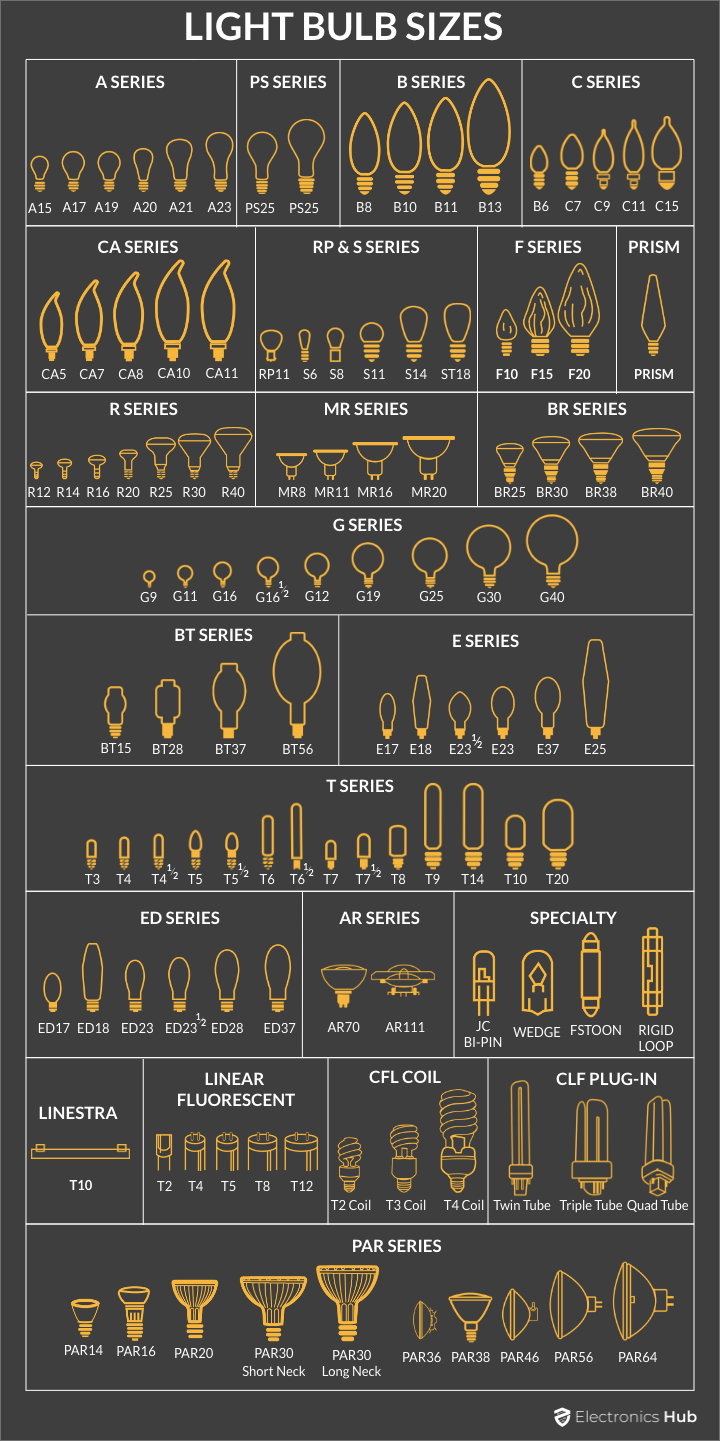
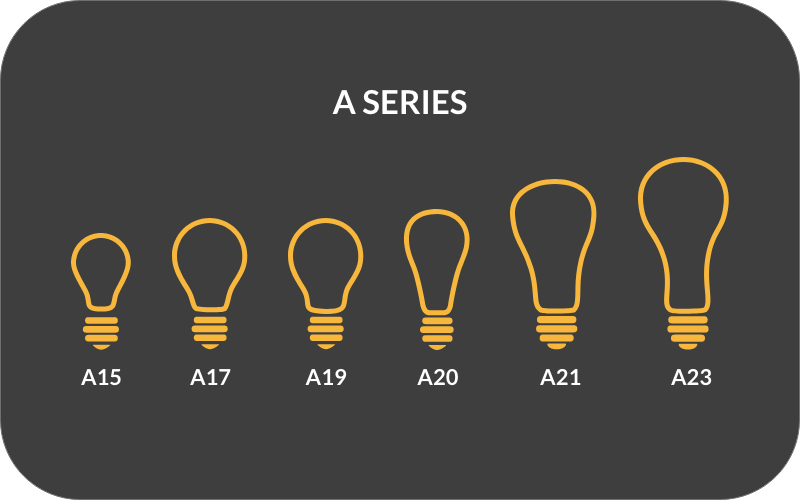
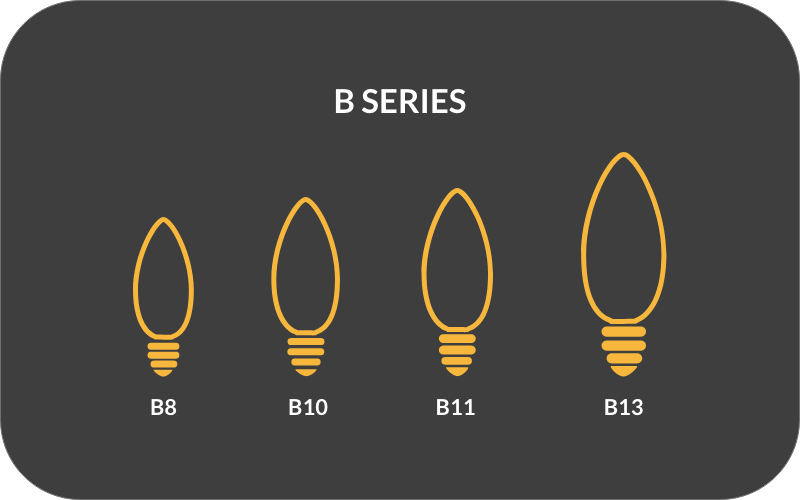
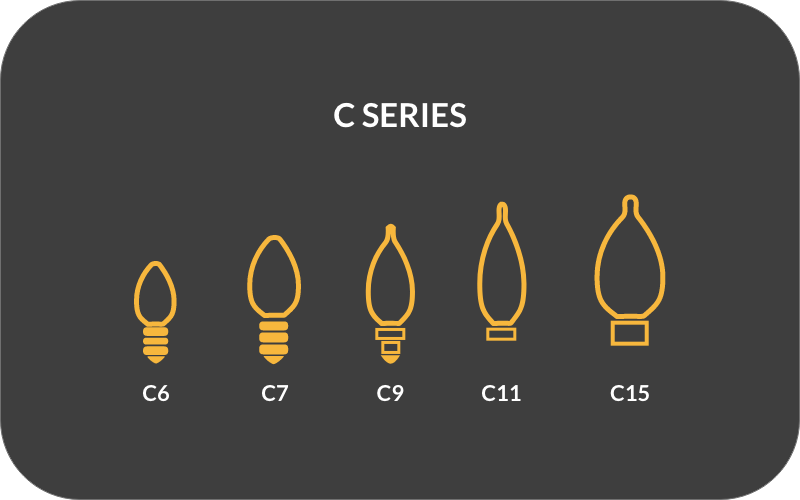

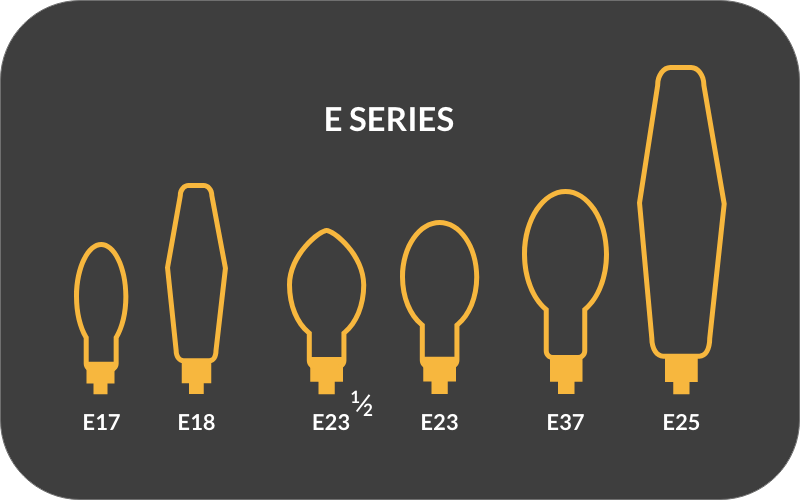
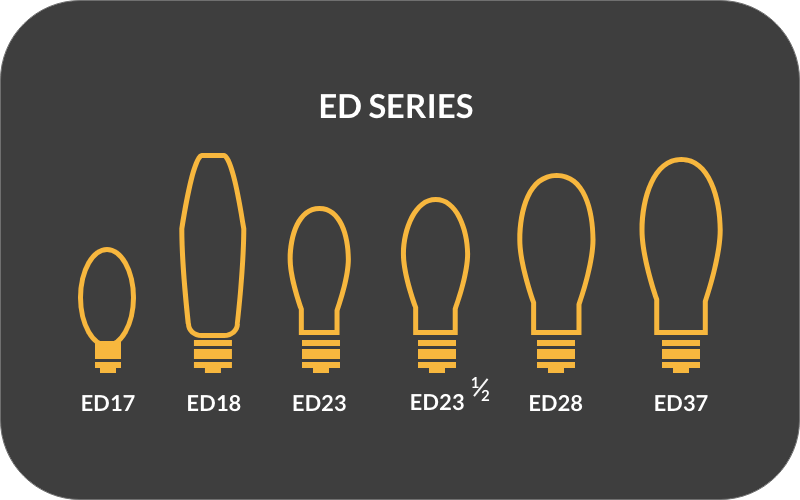
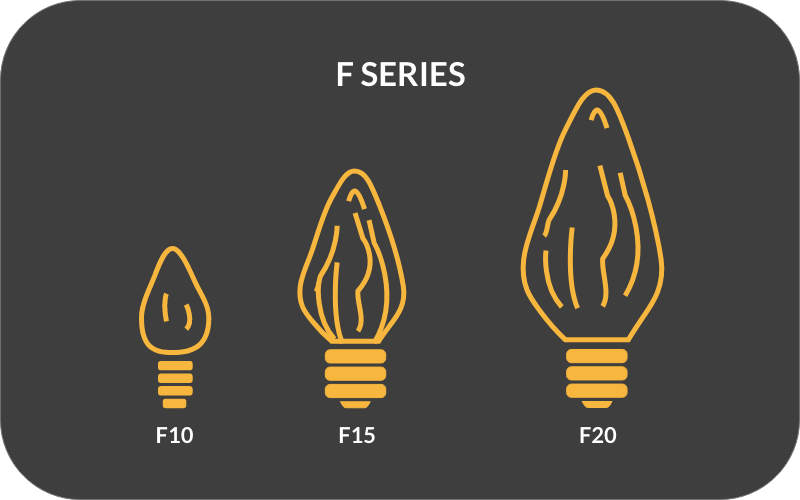
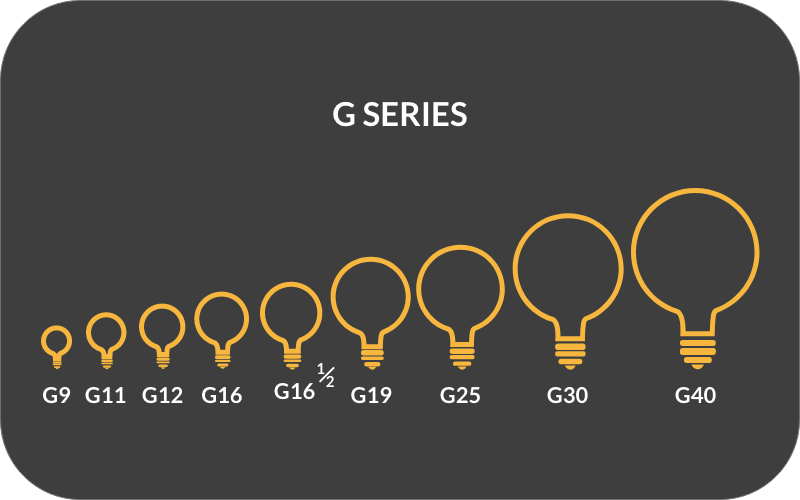
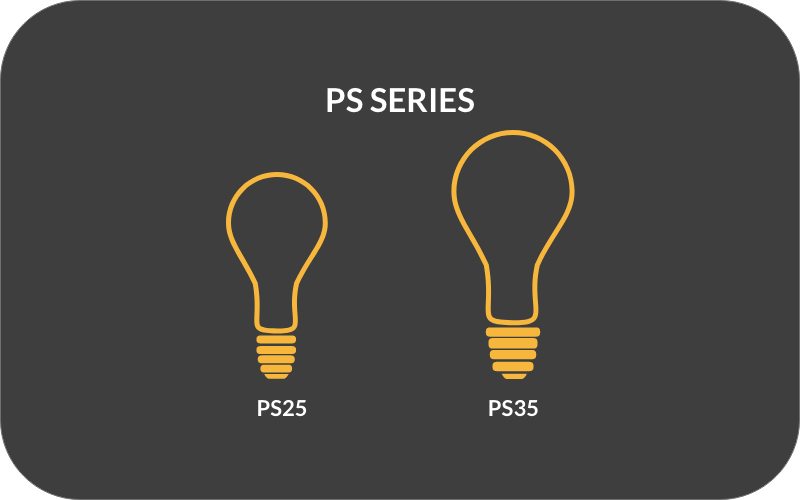
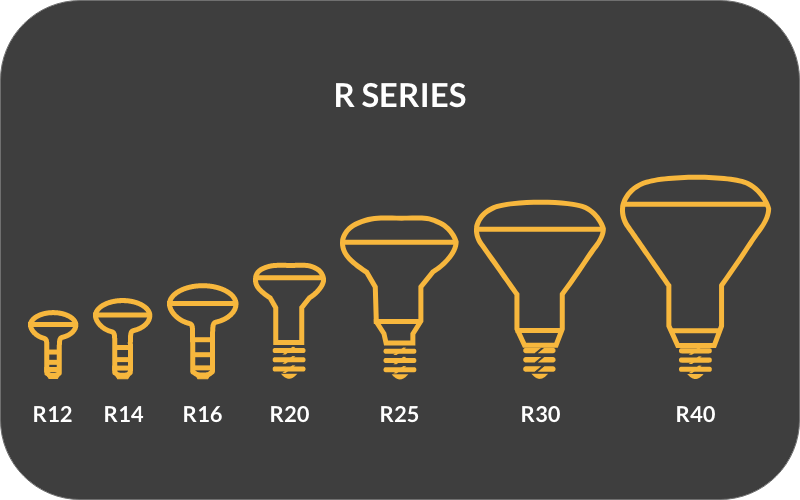
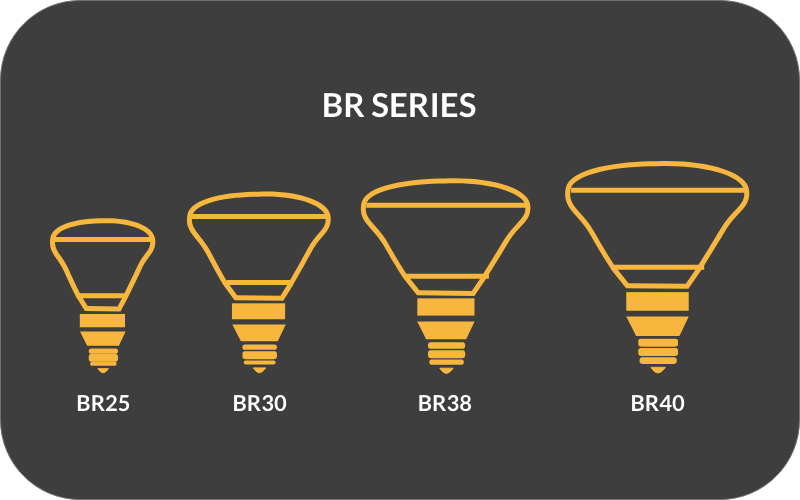
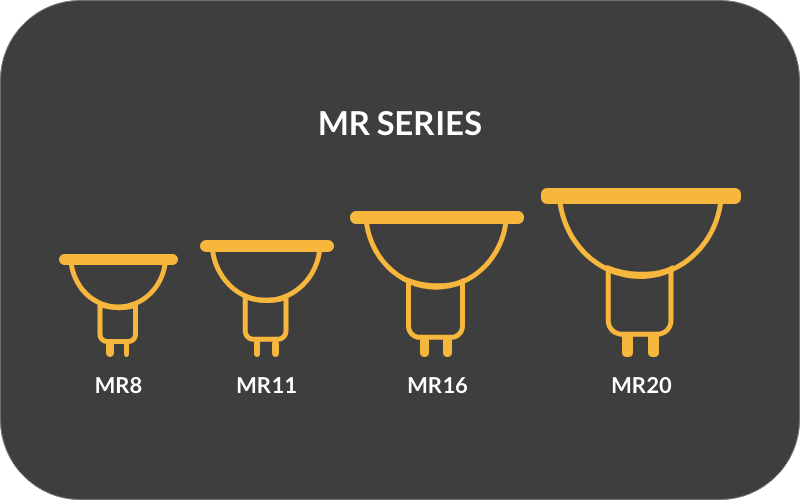
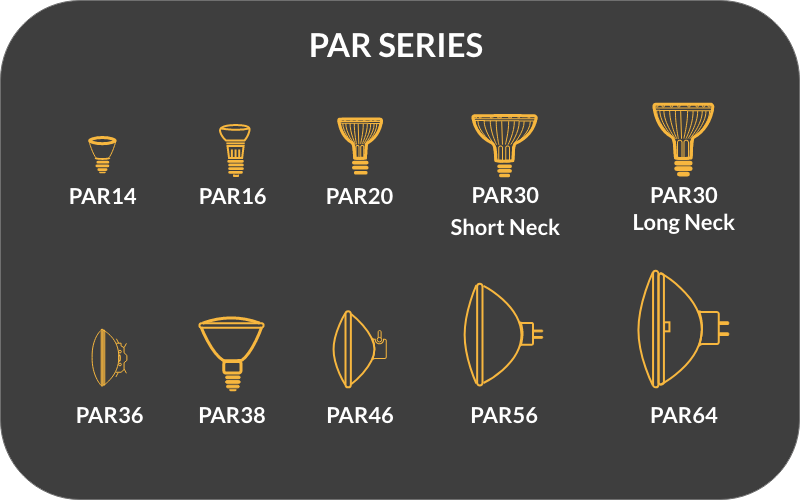
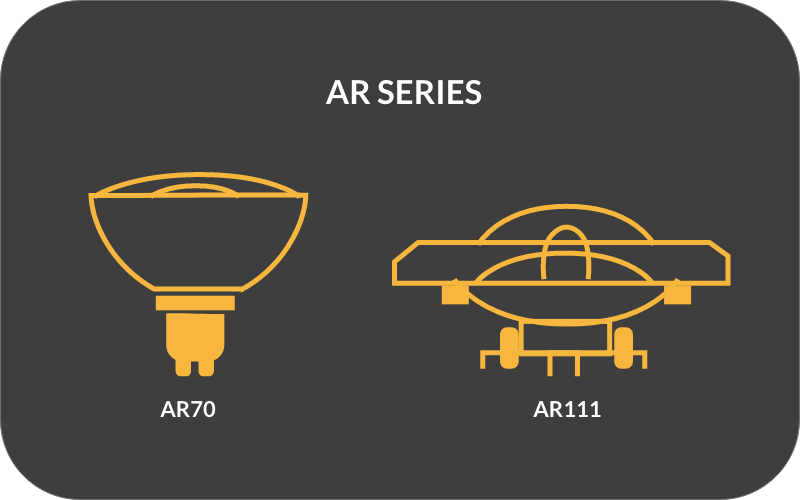
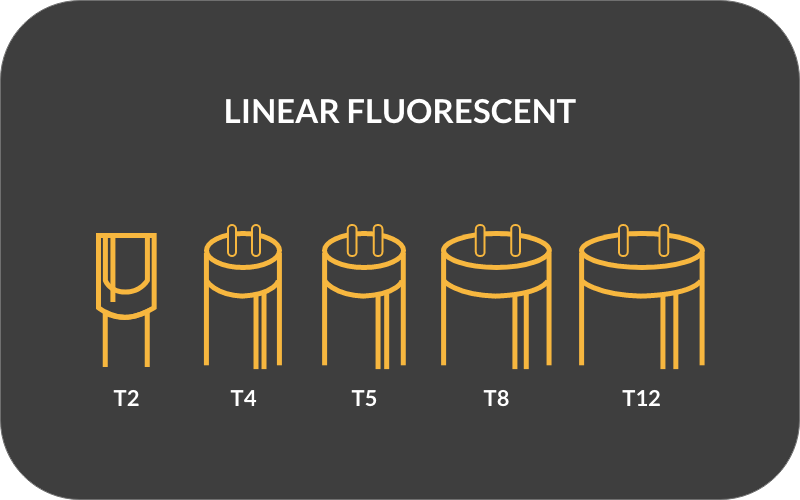
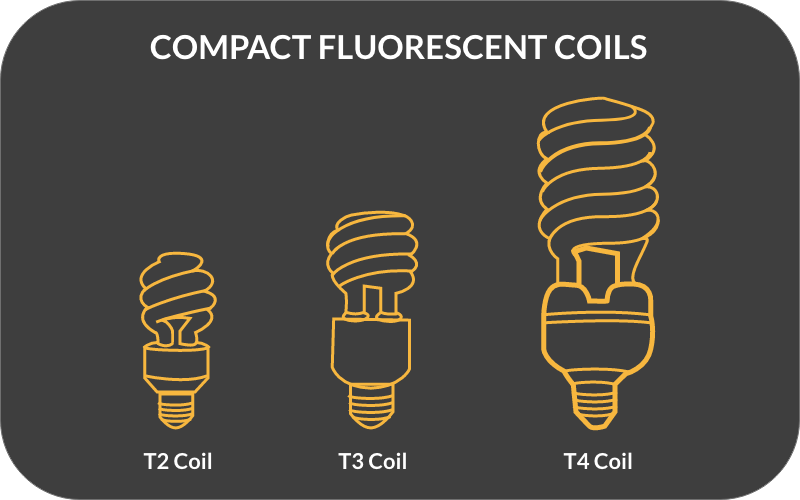
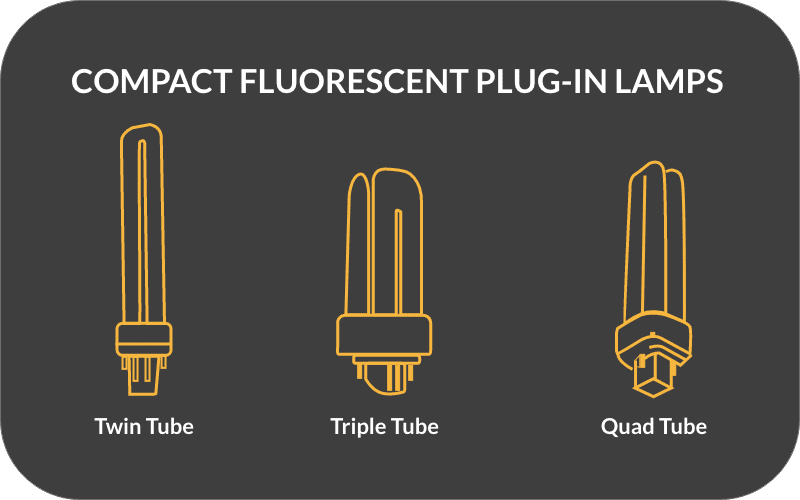
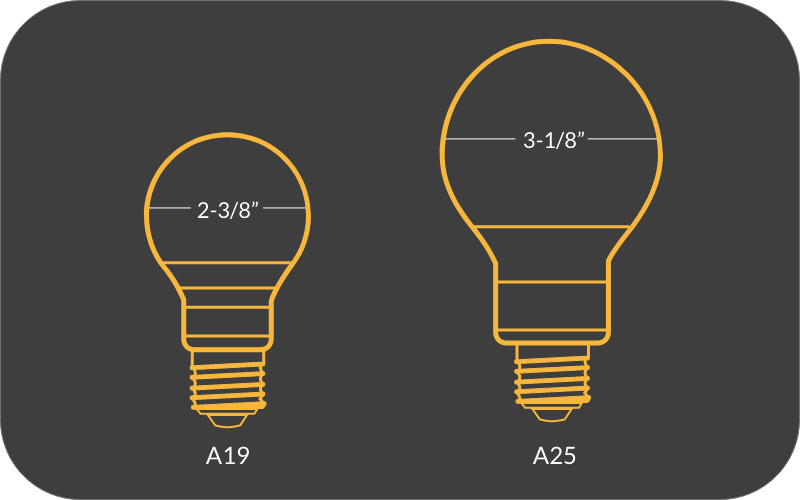
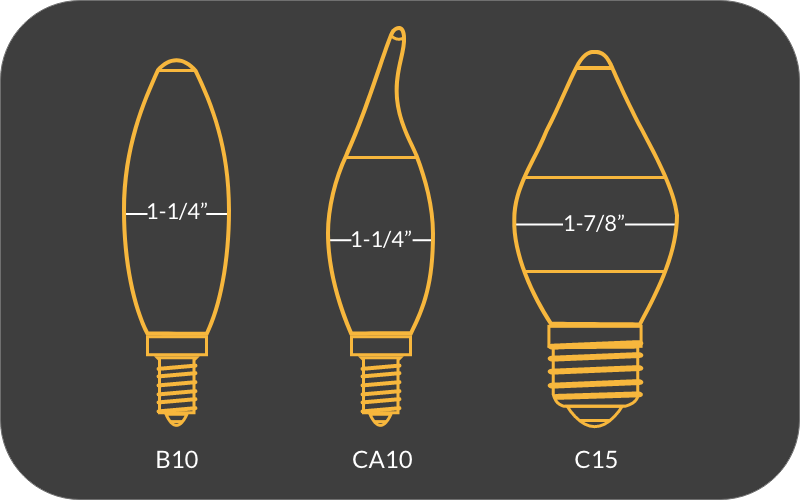
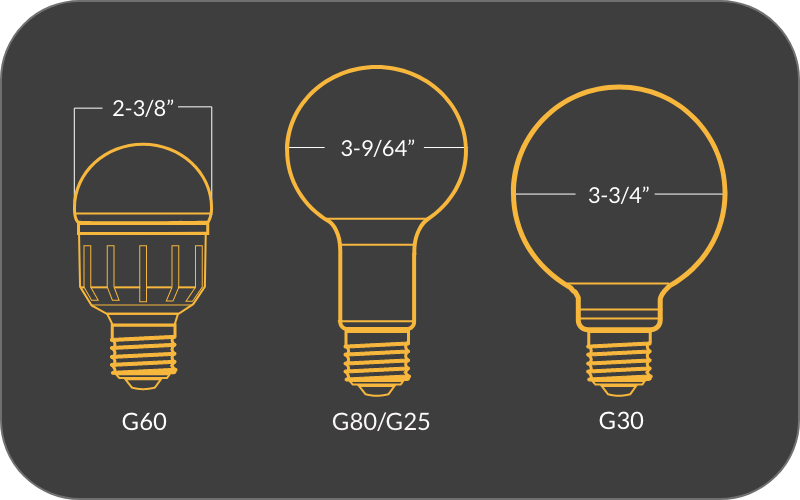
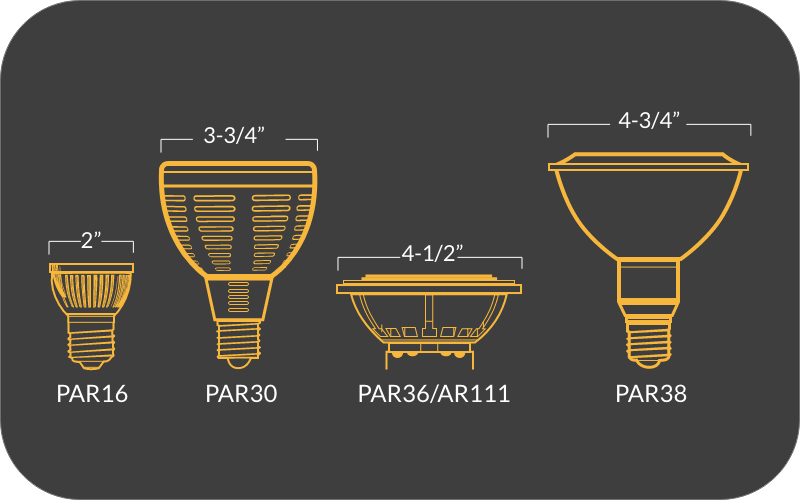
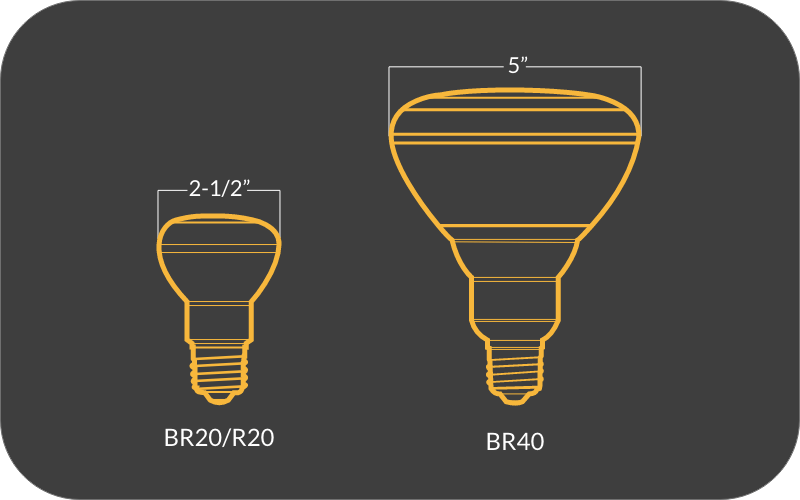
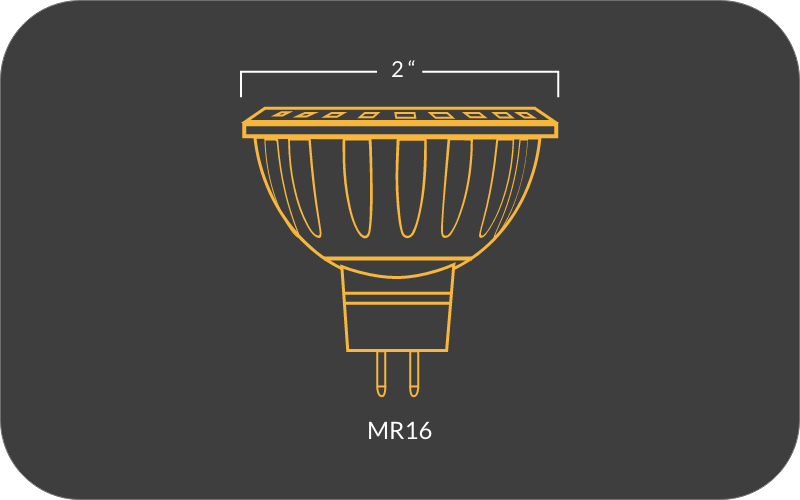
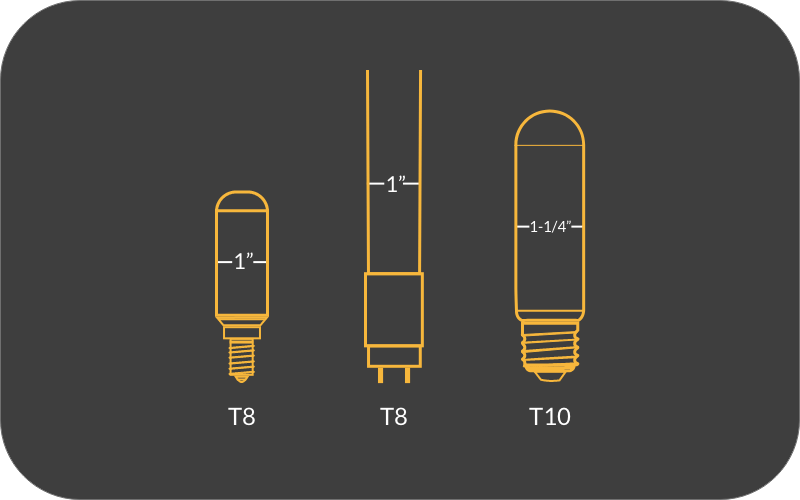


![]()